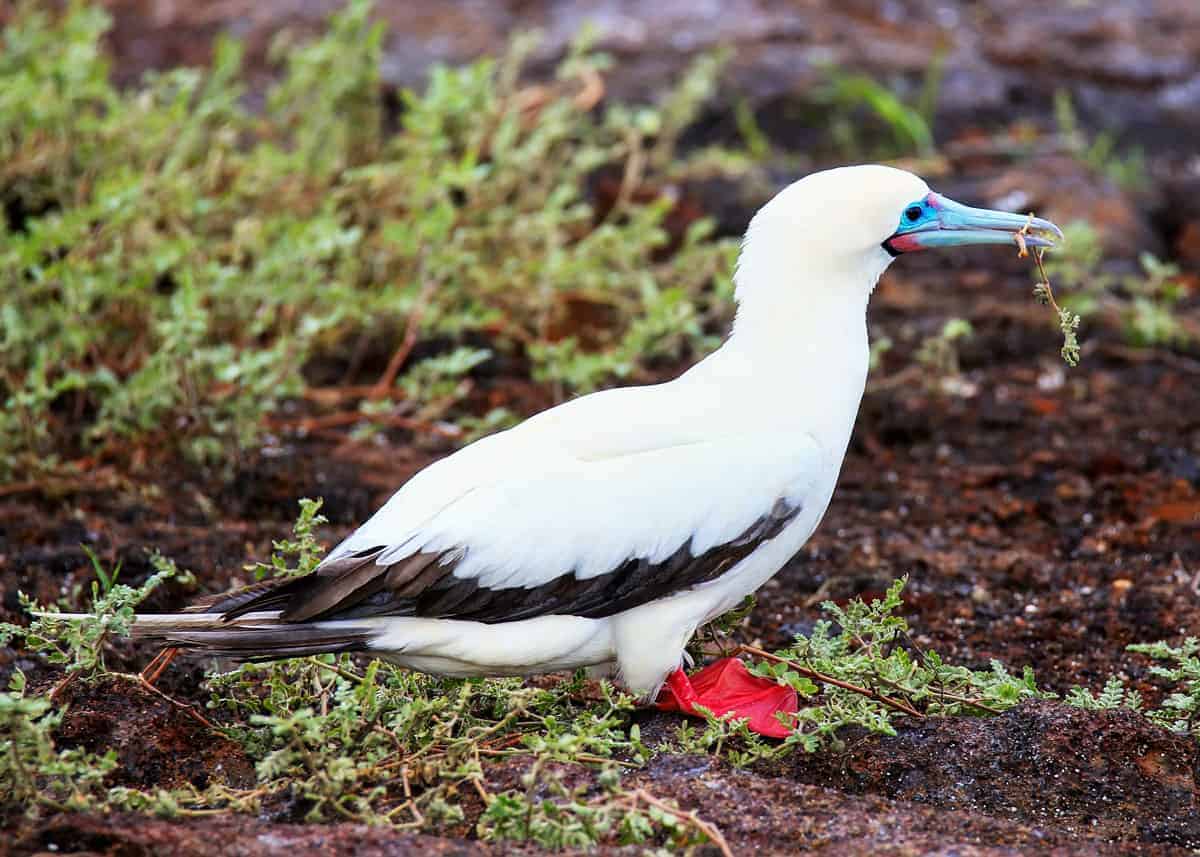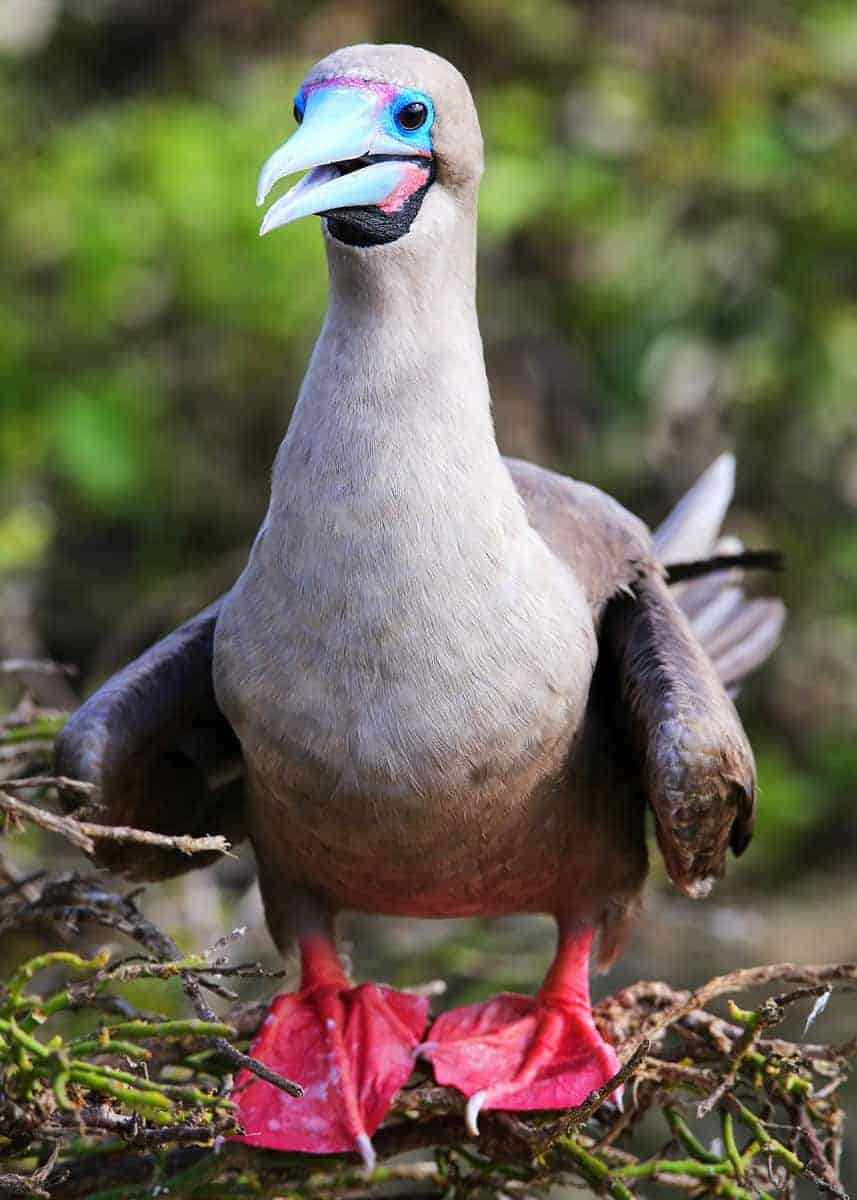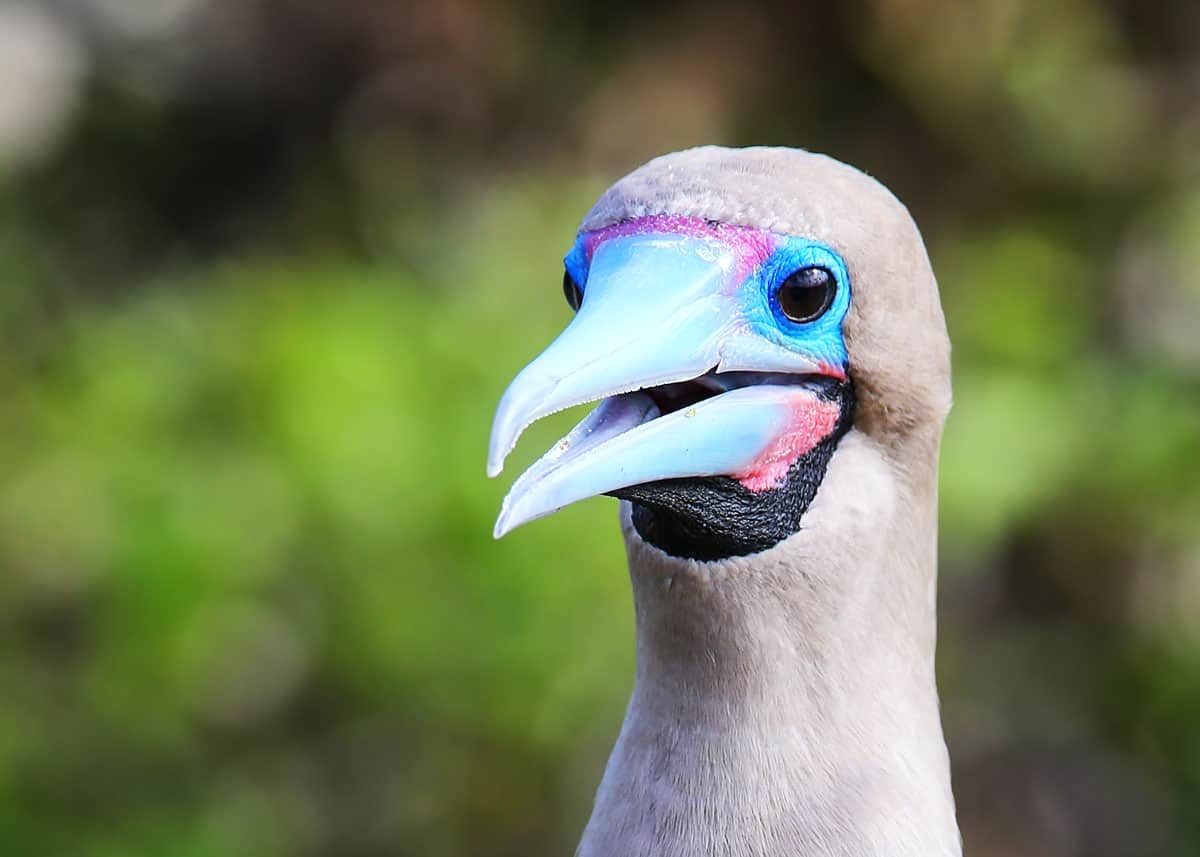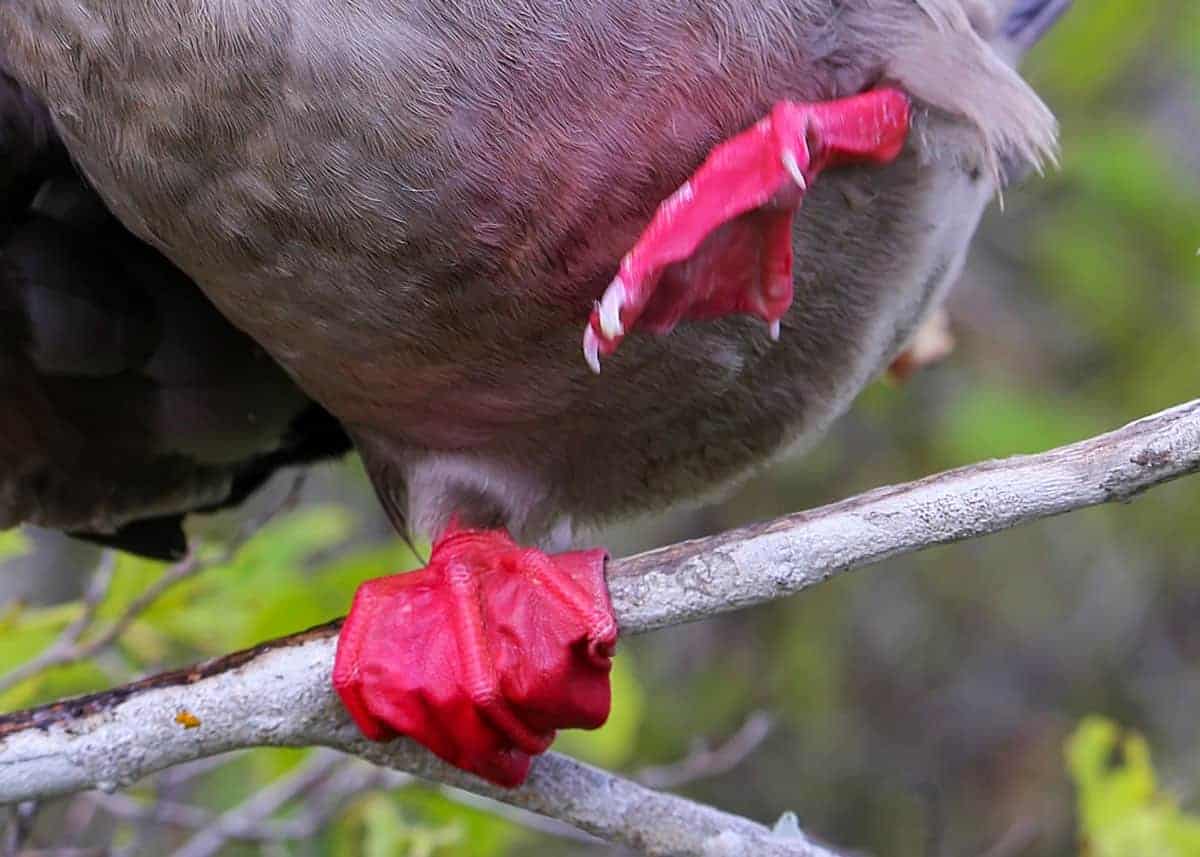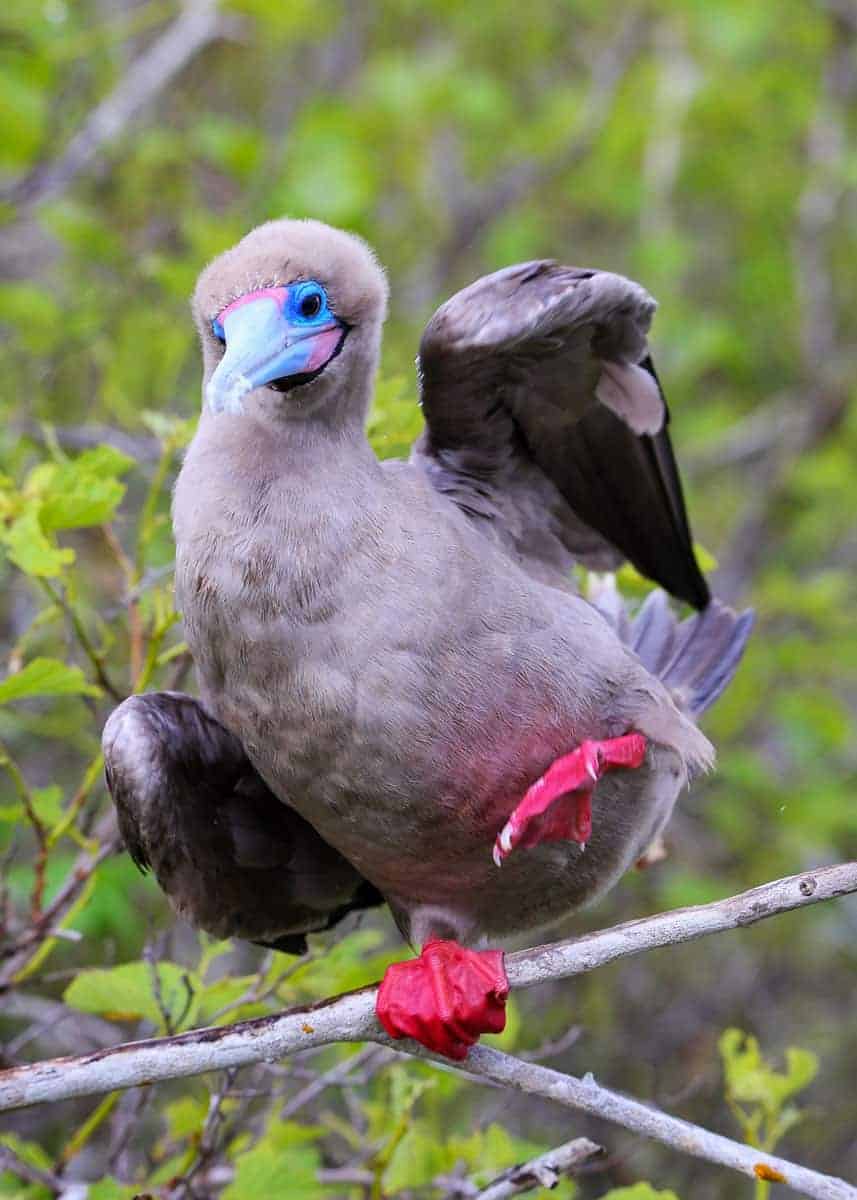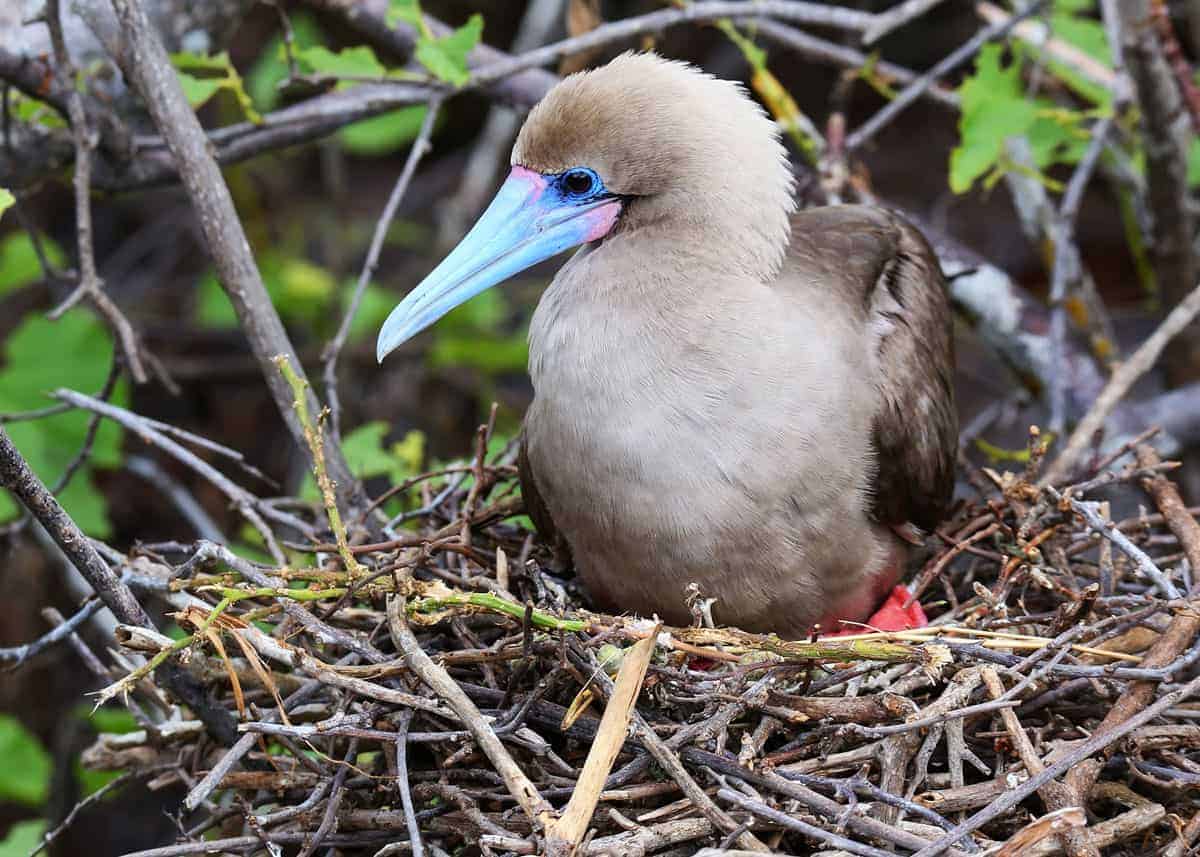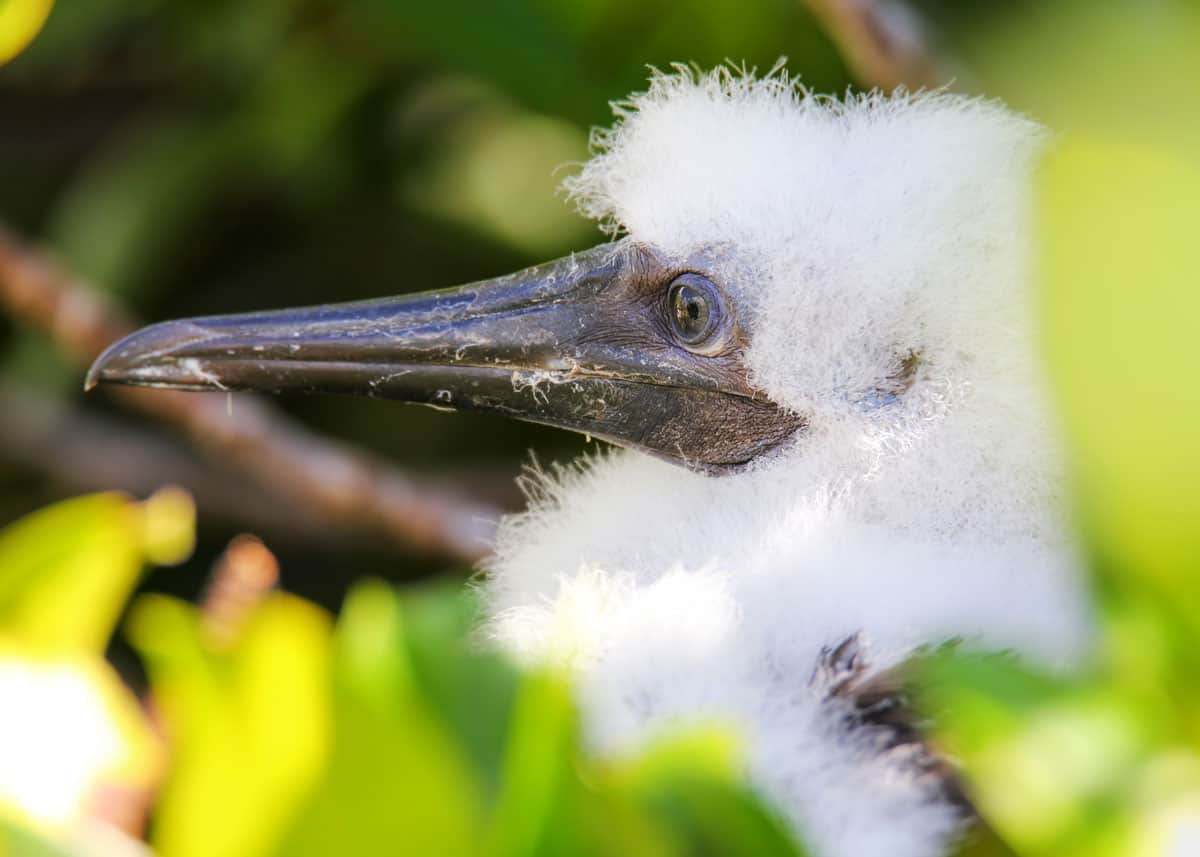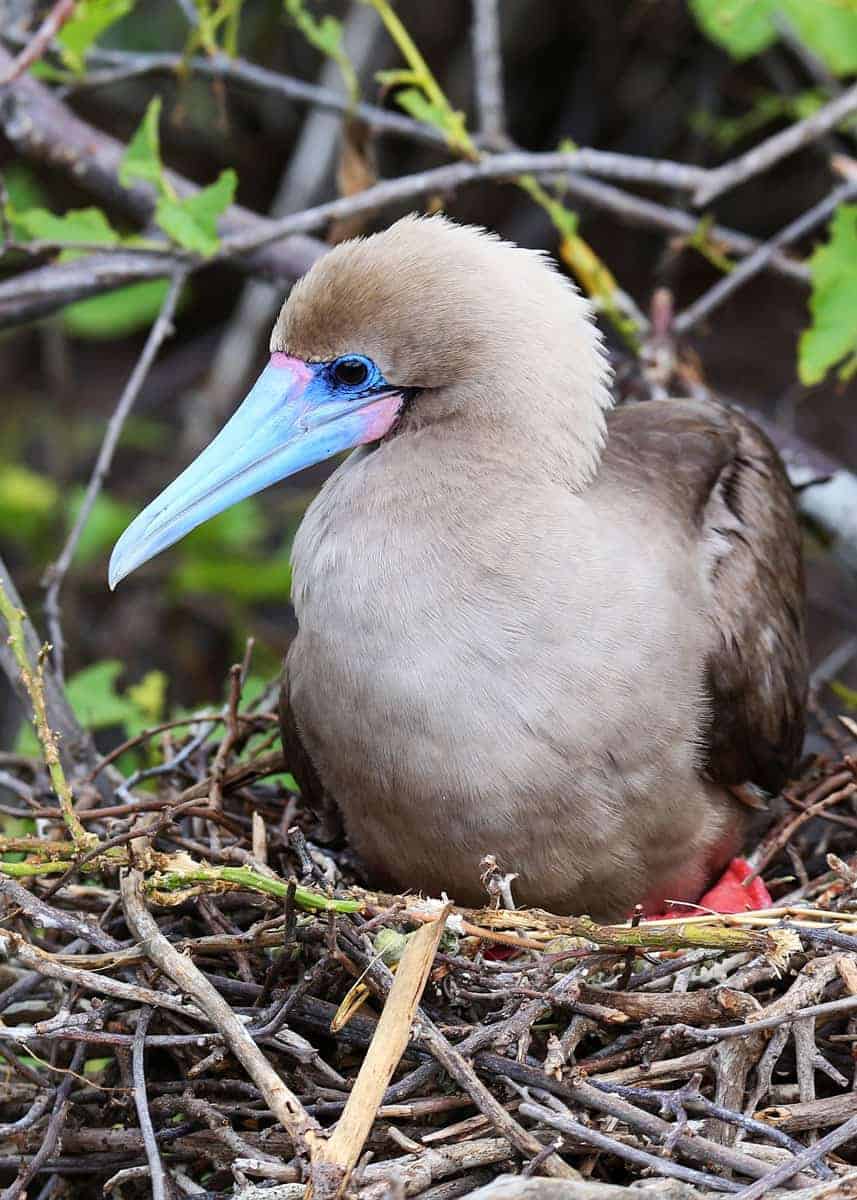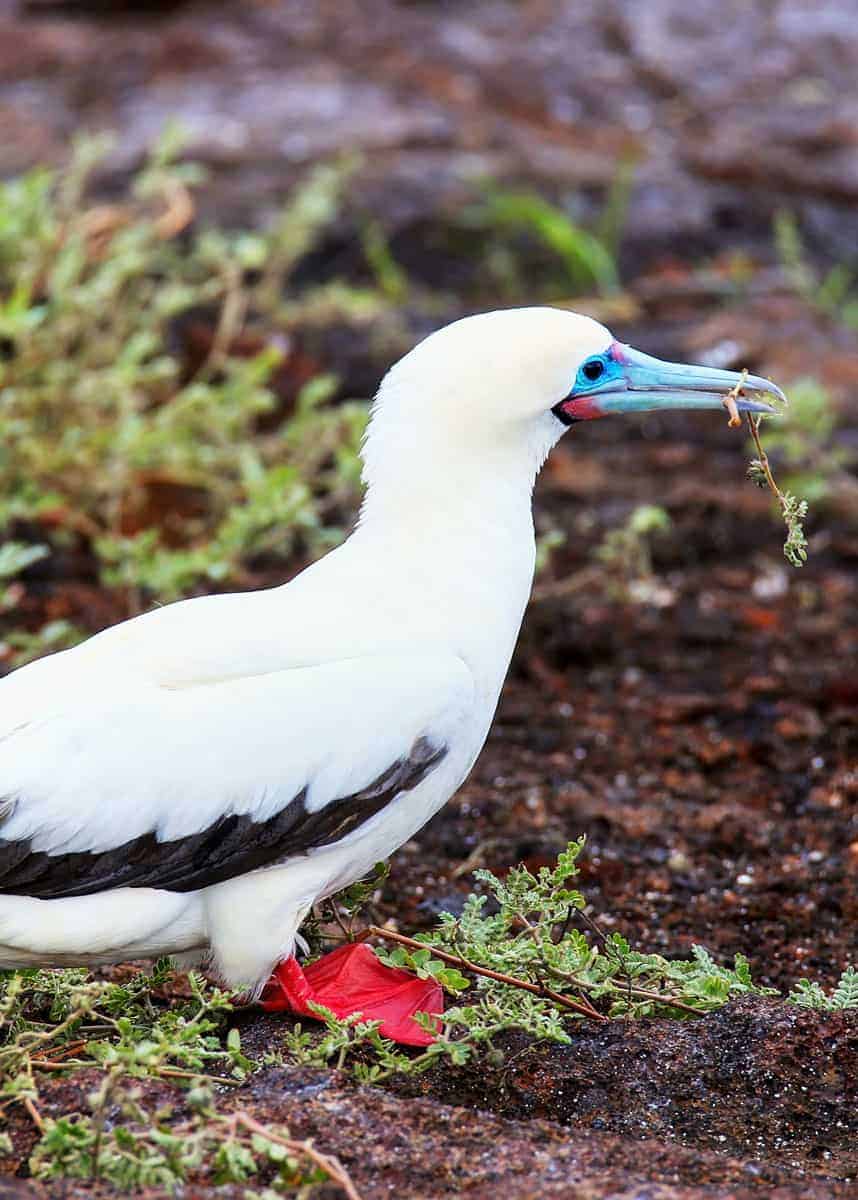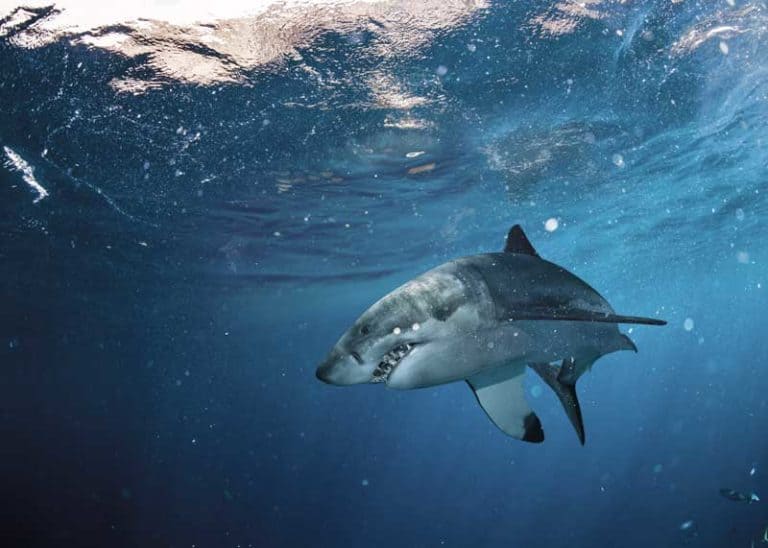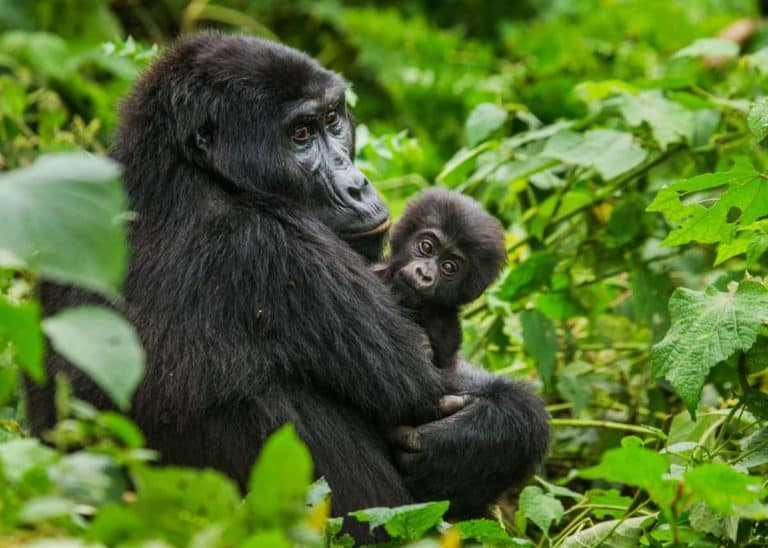25 Red-footed Booby Facts: Color Morphs, Tree Clinging Webbed Feet… (Sula sula)
Red footed boobies are one of the most unique birds that you’ll find in the Galapagos Islands. In this post, you’ll learn 25 red-footed booby facts about color morphs, three subspecies, unique features, range, size, and more. Plus lots of photos and videos.
Travel tip: If you’re traveling to the Galapagos, you should bring a camera with a good zoom and a decent pair of binoculars. This will increase the odds of spotting and shooting a red-footed booby in the wild.
Guide to the Red-footed Booby
You may have heard of the funny looking seabirds called boobies that live on tropical islands like the Galapagos Islands. But, did you know there are more than one species of boobies? Or, did you know that some species, such as the red-footed boobies, are comical creatures with really odd features and behavior?
Want to know more about these boobies? Keep on reading because we’ve got 25 red footed booby facts here for you.
Red Footed Booby Overview
- Latin Name: Sula sula
- Range: Tropical islands of the Atlantic, Indian, and Pacific Oceans
- Population Status: Estimated 600,000 individuals
- Size: Height: 28 inches (70 cm); Weight: 30 to 39 ounces (850 to 1,105 g)
- Wingspan: 3.3 feet (1 m)
- Diet: Squid, flying fish, sardines, anchovies, and mackerel
- Physical Features: Red webbed feet and colorful markings on their face
- Where it lives in Ecuador/Galapagos: Genovesa Island
25 Red-footed Booby Facts
1. Where does the red-footed booby live?
Red-footed boobies are found living in large colonies on tropical islands all over the globe, especially in the Atlantic, Indian, and Pacific Oceans.
The world’s largest nesting colony of red-footed boobies lives in the Galapagos Islands, specifically Genovesa Island. There are an estimated 30,000 red-footed boobies living on the Galapagos archipelago.
2. What is the habitat of the red-footed booby?
The red-footed booby is a seabird, so it spends much of its time out at sea except when it comes to shore to breed.
On land, this booby perches in shoreline shrubs and trees, which is an odd sight since this booby has large webbed feet. Most birds that perch in trees have feet that grip tree branches. But, as you’ll learn from this list, that’s not the only odd thing about the red-footed booby.
3. Where do red-footed boobys nest?
Perhaps because it’s a bit clumsy walking on the ground, this booby is one of the few seabirds that makes its nest in shrubs and small trees that are only a few feet from the ground.
Nesting in the trees helps the red-footed booby to take off into flight easier.
By the way, the Galapagos saltbush is this booby’s favorite shrub. Conserving this shrub is important because that means conserving the red-footed booby.
The male chooses the spot and builds the nest with twigs. Once he has the nest ready, the red-footed booby is ready to attract his mate by performing a mating dance that you can read more about it in fact #18.
4. What does the red-footed booby look like?
- Yet another odd feature about the red-footed booby is that it comes in three different morphs: white, brown-tailed white, and brown. These different morphs breed together but tend to live in various regions. The brown morph is most common to the Galapagos Islands, although the white morph also occurs.
- All red-footed boobies are known for their long, pointed blue bills and bright red feet. Also, they all have torpedo-shaped bodies that are adapted to their lifestyle of plunge-diving into the ocean for food. Females tend to be slightly larger than males.
- Juveniles are browner all over and have pale pink legs.
5. Why are red-footed boobys’ feet red?
When red-footed boobies sexually mature, their feet turn red. They use their pretty red feet to attract mates during the breeding season.
Males who have the brightest red feet have the best chance of scoring a mate.
6. How tall is a red-footed booby?
The smallest of all the booby species, the red-footed booby grows anywhere from 25 to 36 inches (64 to 91 cm) in height. The average height is 28 inches (70 cm).
7. How much does a red-footed booby weigh?
Similar in size to a goose, the red-footed booby weighs between 30 and 39 ounces.
8. What is the red-footed booby’s wingspan?
The wingspan of the red-footed booby can reach up to 3.3 feet (1 m).
9. How did the red-footed booby get its name?
The red-footed part, of course, comes from the bird having red feet. The “booby” part of this seabird’s name is derived from the Spanish word, “bobo,” which translates to “fool,” “stupid,” or “clown.”
There are a few reasons why this booby would be called clownish or foolish. For one, the bird looks like a clown with its blue bill and large red webbed feet. Plus, it moves around clumsily on the ground like a silly clown.
Additionally, Spanish sailors in the 18th century thought these birds were foolish because they showed no fear of humans and allowed themselves to be easily caught and cooked for dinner.
10. Are red footed boobys friendly or aggressive?
Red-footed boobies are not afraid of humans and often land on passing ships to rest from flying out on the sea.
During the breeding period, males may show aggression toward one another when defending their nests.
Video of Friendly Red-footed Booby
11. How long do red footed boobys live?
Red-footed boobies are known to live for around 20 years.
12. What eats a red footed booby? Predators and Threats?
The red-footed booby has few natural predators. Large owls or birds of prey may be considered predators, but usually, it’s the booby’s eggs that are eaten rather than the bird itself.
The biggest threats to the red-footed booby are caused by humans. These threats include water pollution, plastic pollution, overfishing, tourism development and loss of habitat.
While large populations of these birds remain, their numbers are declining. Fortunately, there are conservation programs, wildlife refuges and marine preserves in place to help protect these boobies.
13. Are red footed boobys extinct? Is the red-footed booby endangered?
These seabirds are not extinct. Neither are they considered endangered. Their global population is estimated to be around 600,000 individuals.
Their numbers are declining but not at an alarming rate. Therefore, the IUCN Red List (International Union for Conservation of Nature) classifies the red-footed booby as Least Concerned.
14. What do red-footed boobys eat?
Red-footed boobies love eating seafood that includes squid and small fish like sardines, anchovies, mackerel, and flying fish.
15. How do red-footed boobys hunt?
Red-footed boobies may appear clumsy on the ground, but they are experts at flying in the air and diving into the water when on the hunt for food. They’re also agile enough to catch flying fish in mid-air.
Their aerodynamic bodies, long bills and large webbed feet that make them look like clowns on land enable them to plunge-dive at high speed up to 98 feet (30 m) deep into the ocean to snag their prey. Their sharp vision and closable nostrils also help!
These boobies often hunt in large groups in the company of dolphins so they can snatch up the fish that the dolphins herd to the surface.
16. What is the red-footed booby’s Latin name?
- Class: Aves
- Order: Suliformes
- Family: Sulidae
- Genus: Sula
- Species: S. Sula
17. How many subspecies of red footed boobies are there?
There are 3 subspecies of red-footed boobies.
- S. s. sula: Caribbean and southwest Atlantic islands
- S. s. rubripes: Tropical Pacific and Indian Oceans
- S. s. websteri: Eastern central Pacific
18. Do red-footed boobys mate for life?
Red-footed boobies do not necessarily mate for life, but they do stay with the same mate through several breeding seasons.
Some individuals are forced to take a new mate when their previous one doesn’t show up to the breeding site, probably due to predation at sea. And they will occasionally choose a different mate.
Speaking of mating, these boobies are known to perform an impressive balancing act that matches their clown appearance during their mating ritual. They show off their colorful necks, point at the sky with their bills, and wave their big red feet around–all while standing on tree branches.
19. At what age do red-footed boobys lay eggs?
Red-footed boobies begin laying eggs when they reach sexual maturity, which is usually around 3 years of age. Some individuals may begin laying eggs a year earlier or later.
20. How often do red boobys lay eggs?
These boobies lay eggs about every 15 months.
21. How many eggs does the red footed booby lay? What do they look like?
Red-footed boobies usually lay only one pale blue egg per breeding period. Both parents will incubate the egg for about 45 days, but they don’t do this like other birds.
Boobies don’t have brooding patches on their breasts, so they use their webbed feet to incubate the eggs. Their feet have many blood vessels that produce increased blood and heat.
After the chick hatches, the parents continue to feed it for about three months until learns to fly on its own.
22. What is the red-footed booby’s call?
The male red-footed booby makes a whistling call, and the female vocalizes with a hoarse grunt.
When nesting, a male will also chatter with throaty, low-sounding noises.
Audio of Red-footed Bobby Call
23. Are red-footed boobys loud?
Red-footed boobies hardly make any noise when flying at sea unless they’re fighting over prey. They make the loudest noise on land when they are performing their mating ritual.
24. Do red-footed boobys carry disease?
It’s possible for red-footed boobies to carry diseases such as avian malaria, salmonella and avipoxvirus, but they are not known to spread any contagious diseases to humans.
Like other birds, they are also at risk for developing infections caused by lice and parasites.
Fortunately, there are several conservation teams that work together to observe these birds to keep them healthy.
25. Where can I see the red-footed booby?
Your chances of seeing red-footed boobies in the wild are pretty good since they live in many large colonies in a wide range of tropical islands. Plus, they’re not afraid of humans, so you can see them fairly close up on land as well as flying in the sky.
If you’re in the Galapagos Islands, the best places to see the red-footed boobies are Genovesa Island and San Cristobal Island (Punta Pitt, eastern tip of the island). And a few live just off of Floreana Island, on an islet.
In the US state of Hawaii, the Kilauea Point National Wildlife Refuge is home to more than 2,000 breeding pairs of red-footed boobies.
Some zoos such as the Hawaii Zoo, Zoo el Pantanal (Guayaquil, Ecuador), and Parque de las Leyendas (Lima, Peru) may occasionally house rescued or injured red-footed boobies.
Learn more about other Galapagos Islands animals.
Other types of boobies that you can find in the Galapagos include Nazca and blue-footed boobies.
Your Turn
We hope you enjoyed learning about these 25 red footed booby facts as much as we did. What do you think about the red-footed booby now that you know more about it? Would you like to see one in person?
If you already have, let us know what you think in the comments.

